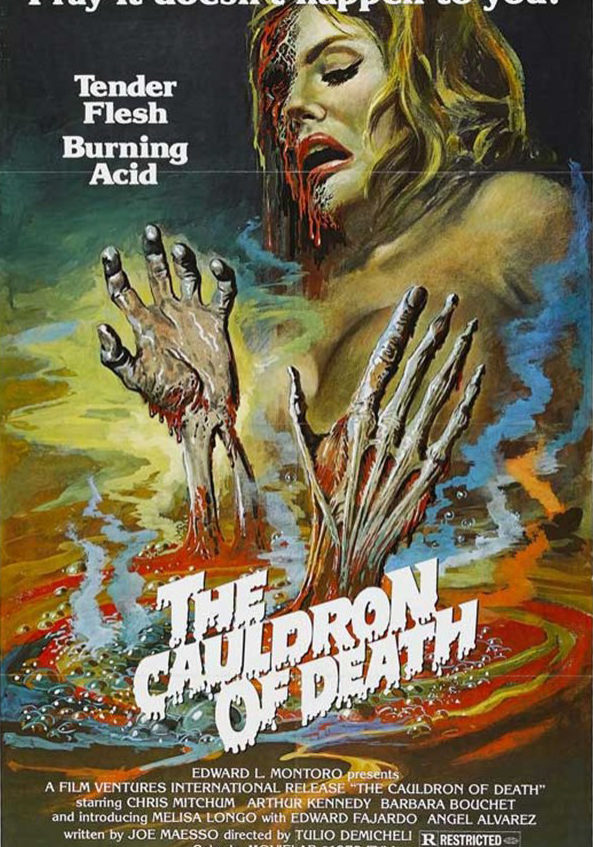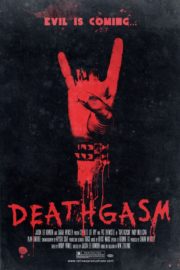A Journey into the Macabre: ‘The Cauldron of Death’
“In the bubbling brew of fear, we all find our truth.” This chilling line from The Cauldron of Death, a somewhat obscure gem from the catacombs of 1973 horror cinema, encapsulates the bewitching terror that director Victor Grimwood stirs up. In an era flourishing with the sinister and the supernatural, Grimwood’s potently atmospheric film finds its footing among some of the more haunting endeavors of the time. The Cauldron of Death follows a skeptical journalist as he investigates a series of disturbing events in a small, insular town, only to uncover a witchcraft cult with a dark secret.
Shadows and Whispers: Crafting Terror
The creepy ambiance of The Cauldron of Death is nothing short of enchanting. Grimwood artfully cultivates an atmosphere of dread through masterful suspense and an omnipresent sense of foreboding. With a slower pace reminiscent of the gothic horror tradition, the film bypasses jump scares and opts instead for a more pervasive form of terror that clings to the viewer like cobwebs in a long-forgotten attic.
The cinematography, orchestrated by Helen Watkins, serves as the backbone of the film’s ominous tone. Her use of muted color palettes and strategic low-light scenes creates an environment where shadows seem alive, and every corner could harbor unspeakable horrors. Camera angles are used to disorient and disturb, often providing the viewer with the sensation of being watched through the eyes of an unseen entity. Though light on special effects, the film’s few visual shocks are deployed with precision, etching lasting images into the audience’s collective memory.
Sound, too, plays a pivotal role in the film’s ability to unsettle. The eerie soundtrack, punctuated by discordant strings and haunting choral arrangements, weaves a sense of unease that’s almost tangible. Moreover, the strategic use of silence punctuates the tension, often culminating in a crescendo of frightful noises that seem to emanate from the very bowels of the earth. It’s a master class in auditory manipulation, proving that what we hear can be just as terrifying as what we see.
Humanity in Horror: Performances that Petrify
The cast of The Cauldron of Death delivers performances steeped in authenticity, grounding the supernatural elements in a reality that is relatable and all the more unsettling for it. Lead actor John Merrick brings a palpable skepticism and growing terror that viewers can’t help but mirror, while the supporting cast’s portrayal of the townspeople straddles the line between quaint and insidious, putting one ill at ease.
The horror delivered by the cast originates from well-developed characters who are easy to empathize with, their naturalistic reactions to the supernatural horrors helping to sell the film’s conceit. The actors embody their roles with a passion that bridges the gap between the screen and the seat, making us part of their fear.
Witches’ Brew: Thematic Layers and Subgenre Stirrings
While The Cauldron of Death delves into psychological terror with a supernatural twist, it doesn’t shy away from a smattering of body horror that serves to jolt even the most jaded of genre aficionados. The film employs a rich tapestry of fear-inducing techniques, from the psychological warfare of paranoia to the visceral punch of ritualistic horror.
The narrative doesn’t exist solely to scare, however; it probes deeper issues like collective guilt, the power of superstition, and the human propensity for both violence and denial. Grimwood uses horror not just as a thrill ride, but as a mirror held up to society’s darker aspects, asking us to question our beliefs and the lengths we’ll go to uphold them.
As for its place in the pantheon of horror, The Cauldron of Death surprises with its innovative melding of traditional horror tropes and a willingness to venture into the realm of the uncomfortable and the taboo. It’s a film that resonates long after the final credits roll, both for its narrative crafting and its poignant social commentary.
This movie is an understated treasure for true horror connoisseurs and might appeal to those with an affinity for the atmospheric scares of the ’70s-era genre cinema. Its depth and intelligent approach might not cater to the casual viewer expecting incessant action and gore, but for those willing to immerse themselves, it offers a richly rewarding experience.
Summoning the Verdict from the Depths
The Cauldron of Death excels in the areas of mood and character, weaving a compelling tale that touches on timeless human fears. While the slow burn of its narrative and subdued special effects may not satiate the appetites of modern audiences craving relentless terror, the film’s strengths in atmosphere, character development, and thematic depth make it a must-see for students of the genre and fans of psychological horror.
Certain images and scenes may prove unsettling, and the film explores mature themes that might not be suitable for all audiences. Nevertheless, its craft merits appreciation, and its understated influence on later works in the genre is undeniable. For those who appreciate horror that lingers like a whisper in the dark, The Cauldron of Death is a pot worth peering into.




